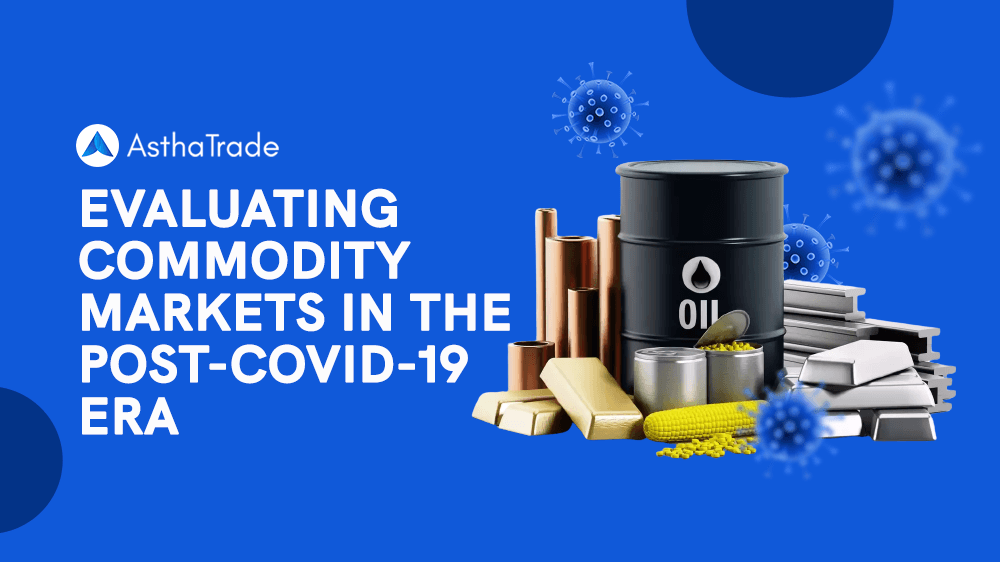Agri Commodity: Types, How to Trade, Factors, Future Trends


00:00 / 00:00
Agricultural commodities are products that are obtained from farming or animal husbandry, such as wheat, rice, vegetables, milk, etc. These are the basis of our food and play an important role in the income of farmers as well as the economy of the country. In an agriculture-based country like India, these are the source of livelihood for crores of people. In this blog, we will learn about agricultural commodities, their types, trade and the main factors affecting the prices.
Understanding Agricultural Commodities
Agricultural commodities are raw products obtained from farming or animal husbandry and are bought and sold in global markets. These include products such as wheat, rice, corn, soybeans, cotton, milk, meat, fruits, vegetables, and coffee. These commodities meet our food, clothing, and other needs and play an important role in the global economy.
Agricultural Commodities vs Other Commodities: Agricultural products are highly dependent on weather, soil and rainfall, so price fluctuations are common. On the other hand, commodities such as gold, silver, oil or gas are extracted from the ground and their prices depend mostly on global demand and supply.
Where are they important?
Food security: Agricultural products play a major role in feeding the world's growing population. They reach the plates of every household.
Employment and economy: In a country like India, agriculture provides employment to a large population. Also, the country gets foreign exchange from its exports.
Backbone of industries: Sectors like food processing, textile manufacturing and biofuels depend entirely on agricultural products.
According to the data of 2024, agriculture contributes about 18% to India's GDP and it provides livelihood to more than 50% of the people
Agricultural commodities are not limited to farming; they are linked to the life of every person, the economy of the country and the strength of industries. A correct understanding of them is not only beneficial as a consumer, but is also very important if you are thinking of investing or trading.
Types of Agricultural Commodities
The things that come out of our farms and animal husbandry are not limited to just food and drink. They are of many types and are used for different purposes. Let's know them in some main categories:
1. Grains: Grains are the most important part of our country's plate. These include crops like wheat, rice, maize and barley. Bread is made from wheat, rice is especially liked in Asian countries, maize is used not only in food but also in animal feed and fuel, while barley is mostly used in beer and animal feed.
2. Oilseeds: Edible oil is extracted from seeds like mustard, soybean and sunflower. These oils are important not only for the kitchen but also for the health and FMCG industry.
3. Soft Commodities: Crops like cotton, coffee, cocoa and sugar come under this category. Cotton is used to make clothes, coffee and cocoa are the lifeblood of the beverage industry, and sugar from sugarcane is a daily need of every household.
4. Livestock & Dairy: Animals like cow, buffalo, goat provide dairy products like milk, curd, cheese. Apart from this, meat is also a big market which includes poultry and red meat.
5. Fiber & Timber: Products like jute and wood play an important role in building construction and bag or furniture industry. Eco-friendly bags are made from jute.
6. Biofuel Crops: Ethanol and biofuel are made from agricultural products like sugarcane and maize, which can prove to be a better alternative to petrol and diesel in the future.
7. Fruits & Vegetables: Products like apples, bananas, mangoes, potatoes, tomatoes and onions are a part of everyday life. They go straight from the farm to the market and are in demand throughout the year.
8. Spices & Others: India is not called the land of spices for nothing. Spices like turmeric, chilli, coriander, cardamom, cumin and fennel not only add flavour to food, they also provide health benefits.
Each agricultural commodity has its own role: some fill our food plate, while others provide raw material to run factories. Understanding these is important not just for farmers or traders, but also for every consumer and potential investor.
How Agri Commodities Form the Backbone of the Economy
About 18% of India's total GDP comes from agriculture and related sectors. Agricultural commodities like grains, oilseeds, cotton, and sugarcane have a direct contribution in this. When crops are good, money circulates in the rural economy and the country's economic activities accelerate.
Employment of crores of people: About 50% of the country's population is directly or indirectly associated with agriculture and agri commodity trading. From farmers working in the field to traders in the mandis, transporters, processing units - all are part of this value chain.
Export and foreign exchange: India is one of the largest agriculture commodities exporters in the world. Products like tea, coffee, spices, rice, cotton and oilseeds are in great demand in the international market. These earn India billions of dollars of foreign exchange every year.
Foundation of industry and processing sector: Many big industries such as food processing, textiles, sugar mills, and FMCG are completely dependent on agricultural commodities. For example, without cotton, the textile industry will come to a standstill and without sugarcane, sugar factories will shut down.
Impact on inflation and policies: When the prices of agricultural commodities increase, it directly affects the pockets of the common people. This is the reason why governments take steps like MSP (Minimum Support Price), storage policy, and control on export-import to maintain price stability and food security.
Commodity markets and investment: In today's time, agri commodity trading has become a new option not only for farmers but also for investors. Trading in products like wheat, cotton, mand ustard takes place on platforms like NCDEX and MCX, which brings transparency in the market and prices.
Agricultural commodities are not just the produce of the farms, they play an important role in the economic dynamics, employment, trade and policy planning of the entire country. This is why understanding and developing them in the right direction is important not only for the farmers but for the entire country.
Agri Commodity Trading: An Overview
The purchase and sale of agricultural products such as wheat, rice, soybean, cotton etc. in the market is called Agri Commodity Trading.
Spot Market and Futures Market: In the spot market, there is immediate purchase and sale, whereas in the futures market, the deal is done on a fixed date and price in the future. This reduces the risk of price fluctuations, which is called hedging.
e-NAM: With the e-NAM platform in India, farmers can sell their crops directly in the online market, which gives them better prices and transparency.
Benefits for farmers and investors: Agri commodity trading protects farmers from price volatility and provides new opportunities to investors. It brings stability and transparency to the entire agricultural trade.
Factors Influencing Agricultural Commodity Prices
Agricultural commodity prices are not always stable, they fluctuate due to many different reasons. It is important to understand which factors affect these prices so that farmers, traders and investors can make the right decisions.
Impact of Weather: Lack or excess of rain affects the yield of crops. This reduces the supply and increases the prices. Climate change also affects in the long run.
Supply and Demand Balance: With the increase in population, the demand for food items increases. If the production is not equal to the demand, then the prices increase.
Government Policies: MSP, subsidy and import-export rules set by the government directly affect the prices of agricultural commodities.
Effect of Global Events: War, epidemic or changes in international trade affect the supply, making the market unstable.
Technological Advances: Technologies like precision farming and GMO increase crop production, which affects the prices.
Role of Currency Exchange: When the currency weakens, imports are expensive, which increases the prices of products.
All these factors cause fluctuations in agricultural commodity prices. It is important to understand these factors to make the right decisions.
Future Trends in Agri Commodity Markets
In the coming times, many big changes will be seen in the market of agri commodities and agriculture commodities. First of all, the trend of sustainable practices such as organic farming and environmentally friendly methods will increase, which will protect land and water.
On the other hand, the integration of technology will also accelerate. Blockchain will give farmers transparency in tracking and payment of their crops, while with the help of AI, farming decisions will become even smarter.
The third big thing is the changing pattern of consumption. Now people are moving towards plant-based diets, which will change the demand for some agricultural products.
Finally, resilient crop varieties are being developed to adapt to climate change, which will give good yield even in changing weather.
All these trends will benefit both the agricultural commodity market and farmers.
Conclusion
Agri commodities play an important role in our daily lives and the country's economy. They are not only the source of livelihood for farmers, but are also an important part of trade and exports. It is important to understand the prices and trends of agricultural commodities so that we can make the right investment and production decisions. Their importance is increasing due to changing weather, technology and global demand. Therefore, it is beneficial for everyone to keep an eye on the agri commodity market and stay updated with the latest information. This understanding helps us move towards stability and growth.
FAQs
Q. What are agri commodities?
Agri commodities are those agricultural products which are directly related to farming, such as wheat, rice, maize, spices and cotton etc. These are traded in the market for buying and selling.
Q. How does agri commodity trading work?
In this, farmers and traders make deals in the market on the prices of agricultural products. This trading takes place in two ways immediately (spot market) or in the future (futures market), which protects against price fluctuations.
Q. Why are agri commodity prices volatile?
Prices keep changing due to many reasons like weather, demand-supply, government policies, global events and technological changes. Therefore, these prices sometimes increase and sometimes decrease.
Q. What role does the government play in agri commodities?
The government supports farmers through MSP, subsidies, import-export regulations and digital platforms like e-NAM and increases transparency in the market.
Q. How can farmers benefit from agri commodity trading?
With this, farmers can get better prices for their crops by protecting them from price risk and can also sell their produce directly outside the market.
Q. What are some examples of agricultural commodities?
Wheat, rice, maize, soybean, cotton, spices, oilseeds like oilseeds, and fruits are all examples of agricultural commodities.
Check Out These Related Articles |
The content on this blog is for educational purposes only and should not be considered investment advice. While we strive for accuracy, some information may contain errors or delays in updates.
Mentions of stocks or investment products are solely for informational purposes and do not constitute recommendations. Investors should conduct their own research before making any decisions.
Investing in financial markets are subject to market risks, and past performance does not guarantee future results. It is advisable to consult a qualified financial professional, review official documents, and verify information independently before making investment decisions.

All Category









